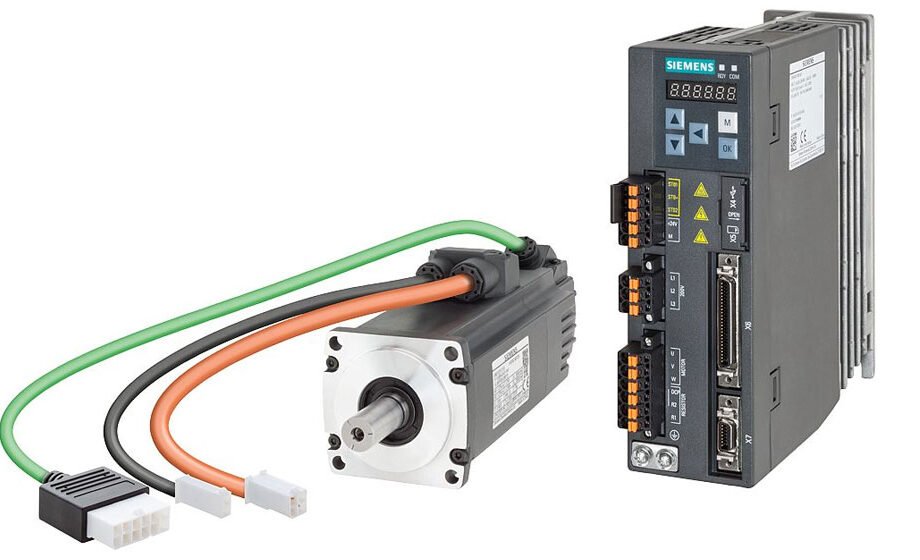Servo amplifiers, integral components in modern automation and control systems, play a crucial role in enhancing the precision and efficiency of servo motors used in various applications. By amplifying the control signals from controllers and converting them into higher power electric current, servo amplifiers like those from Indramat ensure that servo motors operate with optimal speed, torque, and positioning accuracy. Today we’ll explore the diverse use cases of servo amplifiers across different industries, highlighting their importance in facilitating advanced technological solutions.
Manufacturing: Enhancing Automation and Production Quality
In the manufacturing industry, servo amplifiers are pivotal in driving the servo motors that control robotic arms, CNC machines, and other automated equipment. These devices require precise movements to assemble, weld, paint, and perform other manufacturing tasks with high accuracy and repeatability. Servo amplifiers ensure that these movements are smooth and precise, directly impacting production quality and efficiency.
For example, in automotive assembly lines, servo amplifiers like LTE Servo Amplifiers control the robotic arms that install delicate components, ensuring that they are positioned accurately without damaging the parts. Similarly, in CNC machining, servo amplifiers regulate the motors that move the cutting tools, allowing for intricate designs to be executed flawlessly on materials like metal, wood, and composites.
Entertainment: Creating Dynamic Experiences
Servo amplifiers find surprising applications in the entertainment industry, particularly in creating dynamic and engaging experiences. They are used in animatronics and special effects to produce lifelike movements in robotic characters at theme parks and in movie productions. Here, the precision offered by servo amplifiers is crucial for ensuring that the movements are smooth and realistic, enhancing the overall viewer experience.
Furthermore, stage productions benefit from servo amplifiers to control complex machinery used in moving sets and props. These precise movements, synchronized with performances, contribute to seamless and spectacular shows that captivate audiences.
Aerospace and Defense: Ensuring Reliability and Precision
The aerospace and defense industries require components that meet extremely high standards of reliability and precision, and servo amplifiers are no exception. In these sectors, they are used to control the positioning of satellite antennas and radar dishes. Servo amplifiers help adjust these components with high precision, ensuring they can accurately track and communicate with objects in space or detect incoming threats.
In aircraft, servo amplifiers control actuators that manage flight control surfaces like ailerons and rudders. The precision and reliability provided by these amplifiers are critical for the safe and efficient operation of the aircraft, where even minor inaccuracies can have significant consequences.
Medical: Advancing Patient Care
In the medical field, servo amplifiers play a crucial role in various diagnostic and therapeutic equipment. In imaging systems like MRI and CT scanners, they help precisely position patients and manage the movement of the imaging devices to capture clear and accurate diagnostic images. This precision is vital for diagnosing conditions accurately and planning appropriate treatments.
Additionally, servo amplifiers are used in surgical robots, where they enable precise control of surgical instruments. This allows for minimally invasive procedures, reducing recovery time and improving surgical outcomes for patients.
Robotics and Automation: Driving Innovation
Robotics and automation broadly utilize servo amplifiers to enhance the performance of robots used in diverse applications—from industrial automation to service robots in retail and hospitality. In these applications, the amplifiers control the motion of robotic joints, ensuring that movements are smooth, precise, and efficient.
For instance, in industrial pick-and-place robots, servo amplifiers help execute rapid and accurate movements, critical for sorting and assembling products at high speeds. In the consumer space, robots in automated restaurants use these amplifiers to prepare food or serve customers, where precision and speed enhance service quality and efficiency.
Challenges and Considerations
Despite their widespread applications, implementing servo amplifiers comes with its challenges. The primary concern is the integration of these components into existing systems, especially in legacy setups where newer digital amplifiers must communicate with older control technologies. Additionally, the initial setup, programming, and calibration of servo amplifiers can be complex, requiring specialized knowledge.
Moreover, the environmental conditions under which servo amplifiers operate can affect their performance and longevity. Industries like manufacturing and aerospace need amplifiers that can withstand extreme conditions without degradation, necessitating robust design and frequent maintenance checks.
Conclusion
Servo amplifiers are critical components that enhance the functionality of servo motors across a broad spectrum of industries by ensuring precise control of movement. From manufacturing to entertainment, aerospace to healthcare, these devices enable a range of applications that rely on accuracy, efficiency, and reliability. As technology continues to advance, the role of servo amplifiers in driving the next generation of industrial automation and robotics will undoubtedly expand, further solidifying their position as essential components in the modern technological landscape. By overcoming integration and operational challenges, industries can fully leverage the benefits of servo amplifiers to innovate and improve their processes, products, and services.

